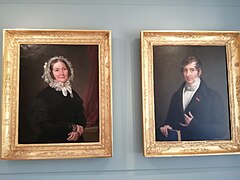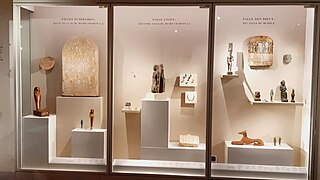You can help expand this article with text translated from the corresponding article in French. (May 2021) Click for important translation instructions.
|

The Champollion Museum (French: Musée Champollion) is a French historical museum located in Vif in the family home of the Champollion brothers. It presents the daily life of the discoverer of Egyptian hieroglyphs and that of his brother Jacques Joseph while they lived in Grenoble.
The museum opened temporarily in 2004 during the ninth International Conference of Egyptology in Grenoble. It was then closed for renovation. It reopened on June 5, 2021. In February 2020, the museum was named a Musée de France by the Minister of Culture.
The Louvre stores 85 Egyptian objects in this museum.
Gallery
-
 Zoé and her husband Jacques-Joseph Champollion.
Zoé and her husband Jacques-Joseph Champollion.
-
 Bust of Jean-François Champollion.
Bust of Jean-François Champollion.
-
 statuette of an Egyptian god.
statuette of an Egyptian god.
-
 Samples of Egyptian objects from the first Egyptian museum of the Louvre (Museum Charles X in 1827).
Samples of Egyptian objects from the first Egyptian museum of the Louvre (Museum Charles X in 1827).
References
- (fr) rfi.fr
- (fr) www.newspress.fr
- "Isère. Le musée Champollion à Vif ouvrira ses portes au public le lundi 5 juin". actu.fr (in French). Retrieved 2022-05-12.
- "Champollion Museum in Vif becomes Museum of France". www.culture.gouv.fr. Retrieved 2022-05-12.
External links
45°03′14″N 5°40′09″E / 45.05389°N 5.66917°E / 45.05389; 5.66917
This article about Egyptology is a stub. You can help Misplaced Pages by expanding it. |
This French museum-related article is a stub. You can help Misplaced Pages by expanding it. |